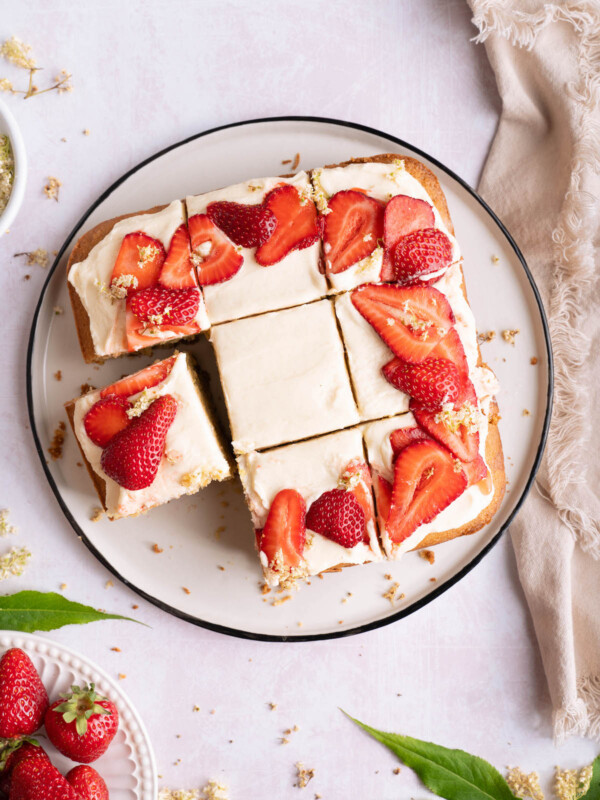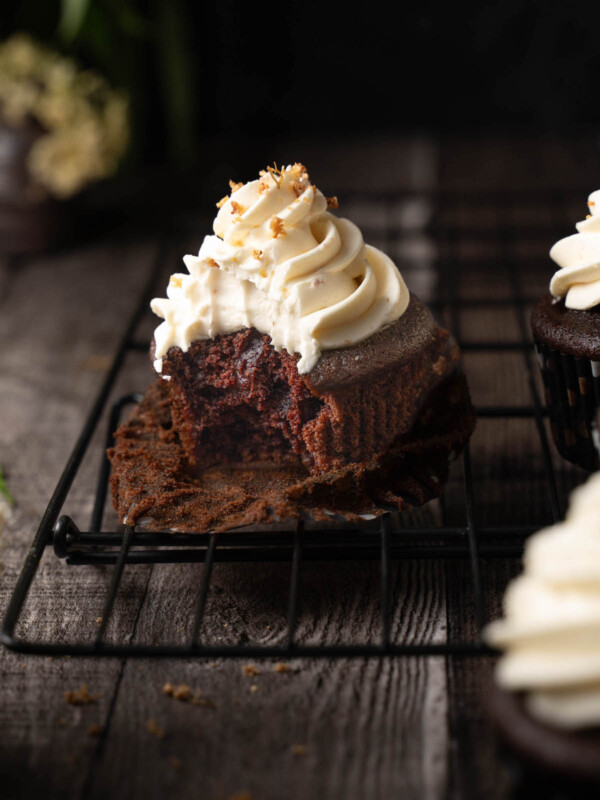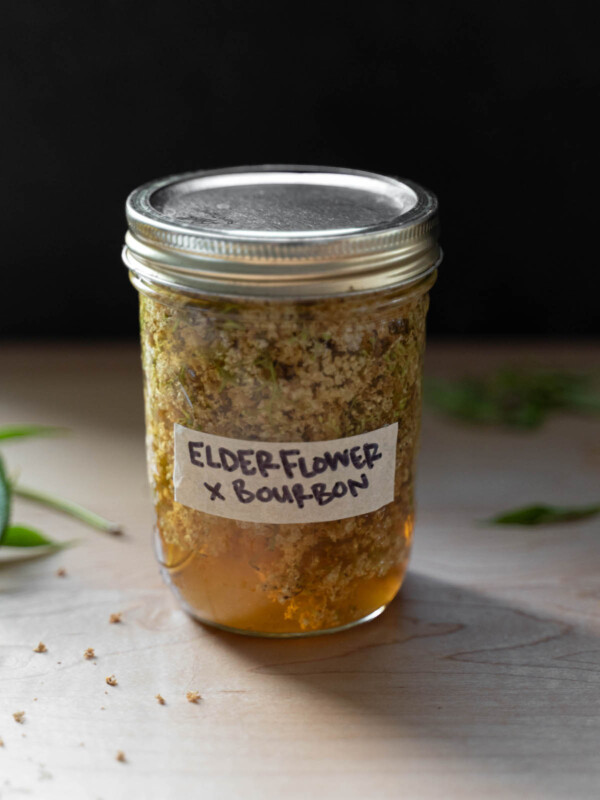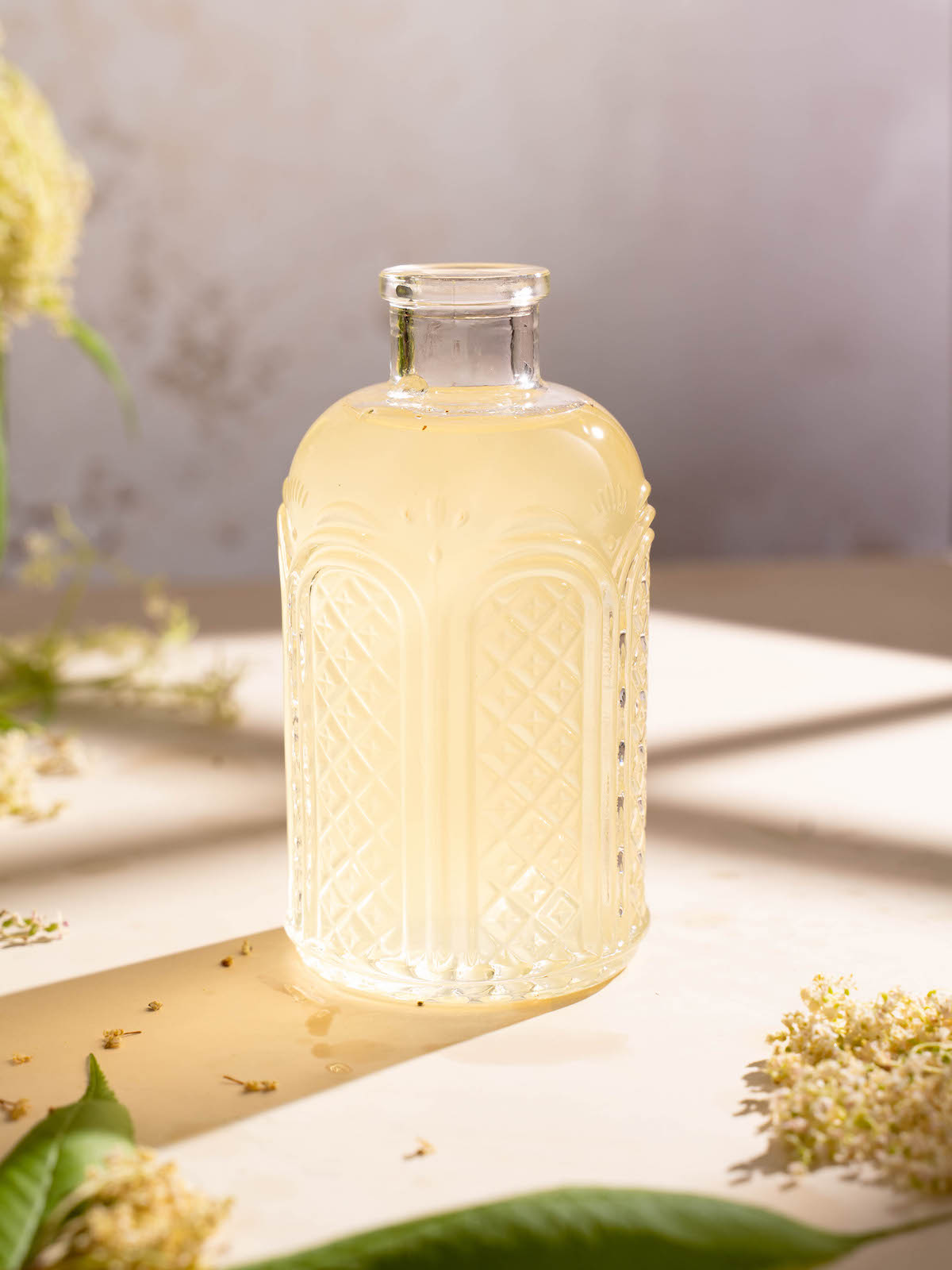
That’s right, today we have a two-for-one recipe! I’ll show you my method for making both Elderflower Syrup and Candied Elderflowers, all in one go. I love using both of these to add the floral flavor of elderflowers to drinks and desserts.
The first time I had the idea to make candied elderflowers was when I made my first batch of elderflower cordial. If you’ve scoured the internet for ideas of what to do with elderflowers, you’ve surely come across recipes for elderflower cordial. This is the most common way to preserve the flowers by infusing them in a syrupy liquid for a few days.
The thing is, all of these recipes have you discard the flowers once the cordial is ready, but I felt that they still had some use in them. I decided to place the syrup-soaked flowers in my food dehydrator until they were completely crisp. To my delight, the result was wonderful – crunchy, sweet little flower clusters perfectly preserved.
I never bother to make elderflower cordial anymore (who wants to wait three days?). This recipe is a quicker adaptation of that method, which results in two delicious elderflower products. Let’s do this!
Recipe highlights
- Preserves the flavor. This is a simple way to capture the ethereal taste of elderflowers, for weeks (or months) after the flowers are in bloom.
- So much easier than cordial. Instead of waiting for 3 days and making a giant batch like most elderflower cordial recipes require, this method is simple and quick. Plus, you only need a few elderflower umbels!
- More bang for your buck. One recipe, two totally different end products to add elderflowers to your drink and dessert recipes.
- Less waste. No need to throw out the flowers after infusing them into your syrup. Let’s turn them into cake decorations instead!
- Uses imperfect flowers. The great news is your flowers don’t have to be in perfect condition for this recipe, although if they are, that’s wonderful! I often make this with flowers I have leftover from other recipes. It’s a great way to use up wilty flowers instead of throwing them out.
Harvesting & preparing elderflowers
Gather your flowers from an area that you’re familiar with, that you know doesn’t get sprayed and isn’t otherwise contaminated with toxins or pollutants. You only need a handful of flower clusters for this recipe, but you can adjust the recipe to make as much as you desire.
Cut the umbels from the elder trees and collect them in a harvesting bag or basket, being careful not to smash the delicate flowers. When you bring them home, you may want to let the flowers sit outside for a while to encourage any tiny bugs to escape. However, I don’t recommend washing elderflowers!
Don’t clean the flowers
Usually, I recommend you wash fresh produce and wild foods before using them in your recipes. In this case, however, it’s best not to wash the flowers. All of the amazing flavor is in that precious pollen, so you don’t want to wash it all away. It’s best to use a small paintbrush or your fingers to manually remove any critters.
When you’re ready, cut or pluck the flowers off their stems, removing as much stem as you can. The stems are mildly toxic, but having bits and pieces of stem is just fine.
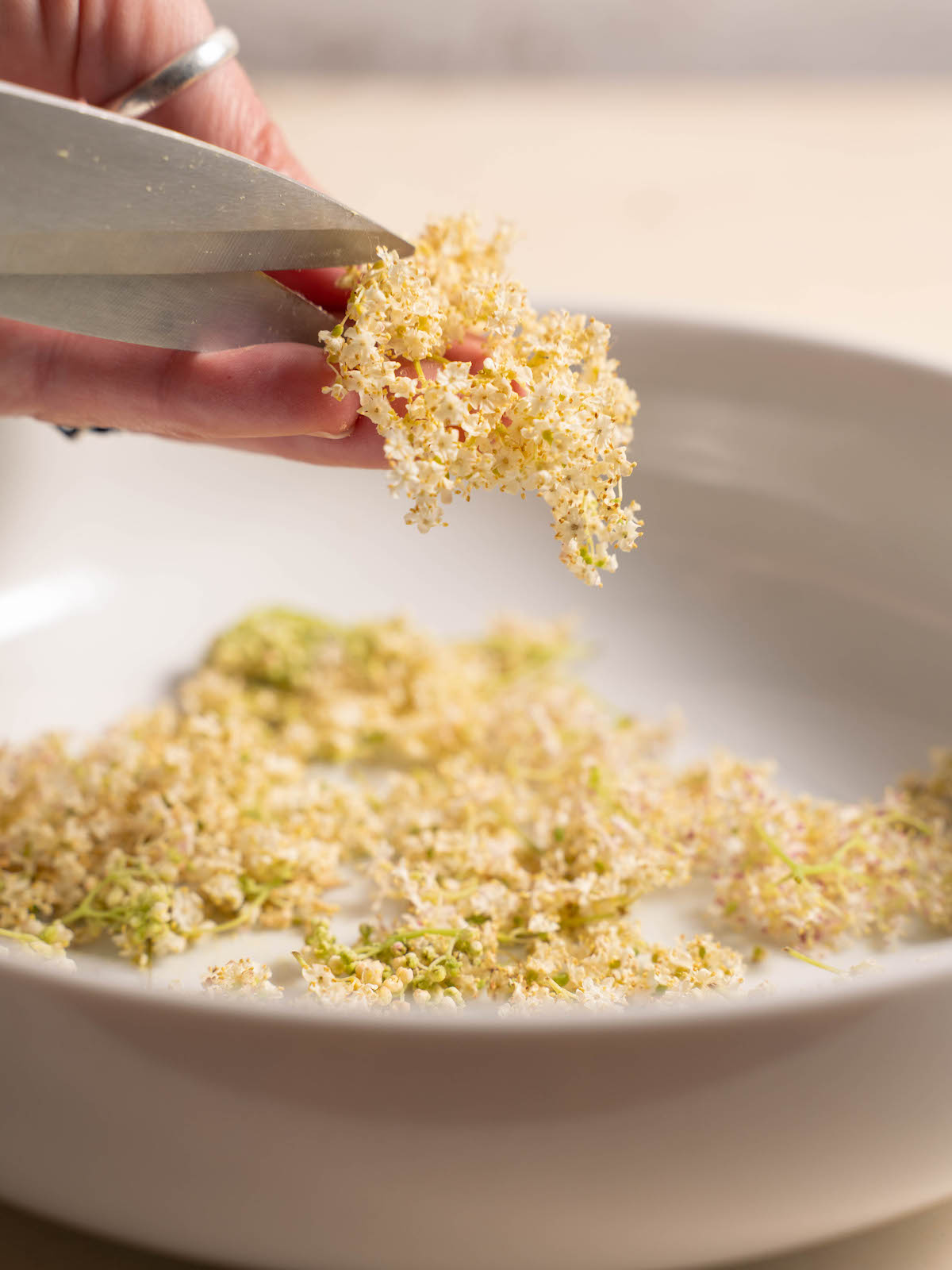
Disclaimer: Foraging for wild edibles must always be done with great care. The information on this blog is provided for educational and inspirational purposes only. It is your responsibility to properly identify any wild plants before consuming them. Some wild plants are toxic or may closely resemble edible species. If you are uncertain about any plant, do not eat it. Always consult a trusted field guide, local expert, and/or professional forager before consuming wild foods. The author of this blog is not responsible for any adverse effects or consequences resulting from the use or misuse of the information provided.
Making the syrup
To make the elderflower syrup part of this recipe, bring equal parts sugar and water to a boil. Then turn the heat down and simmer for about five minutes, or until the sugar is completely dissolved.
Let the syrup cool for about ten minutes, then add the elderflowers. Put a lid on the pan and allow it to infuse for twenty minutes, then strain. Let the flowers drip dry for a few minutes.

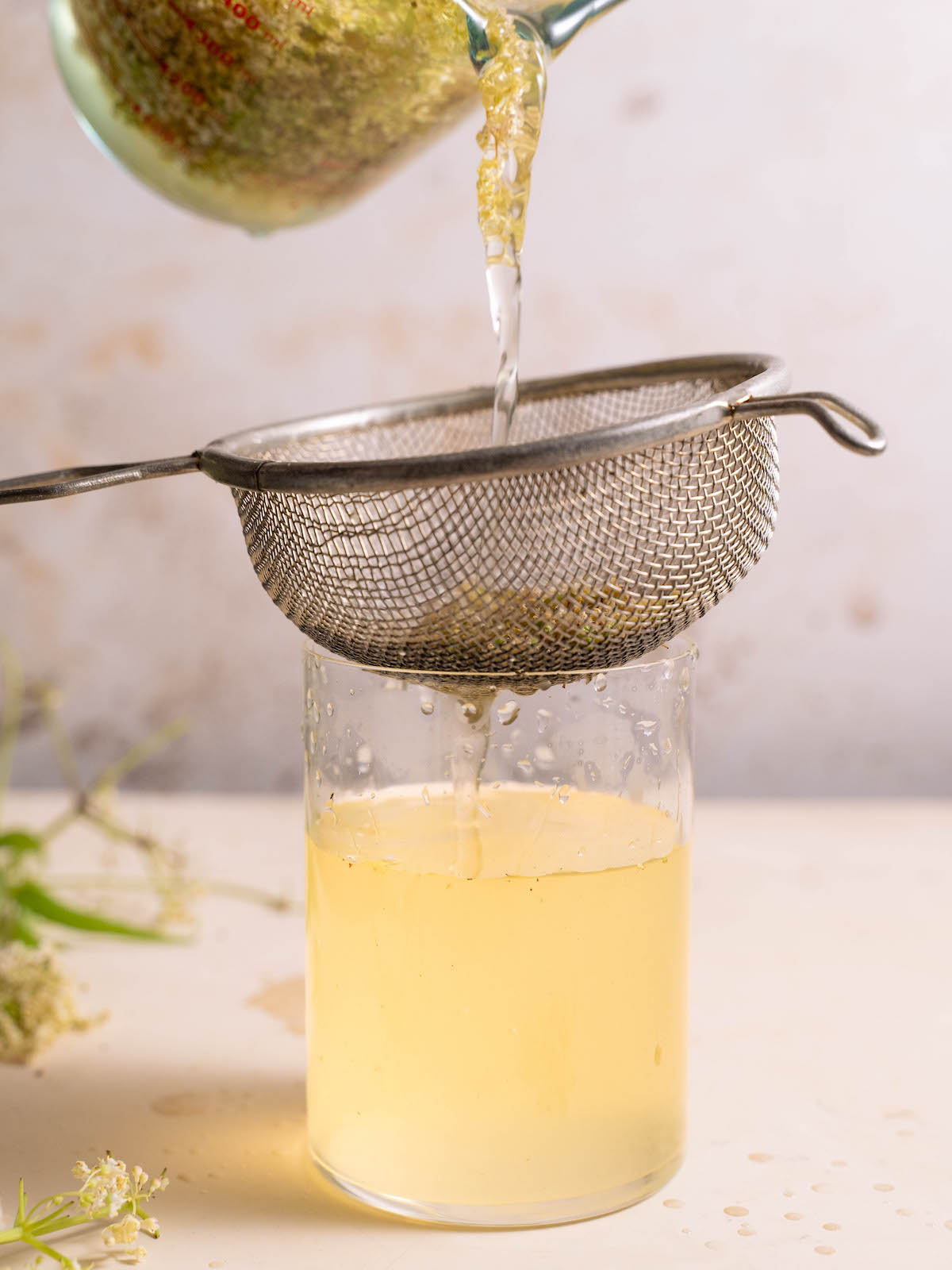
Pour the elderflower syrup into a clean container and store in the refrigerator until ready to use.
Candying elderflowers
To make the candied elderflowers, fill a small bowl with some granulated sugar. Then, take the strained, syrupy flowers and dip them in the sugar, giving them a light toss to coat them completely. Shake off any excess sugar.

Place the sugared flowers on a baking sheet lined with parchment. Dry them in a low oven (under 200° F) for about an hour, until you can easily crumble them with your fingers. They need to be completely dry. You could also use a food dehydrator if you have one.
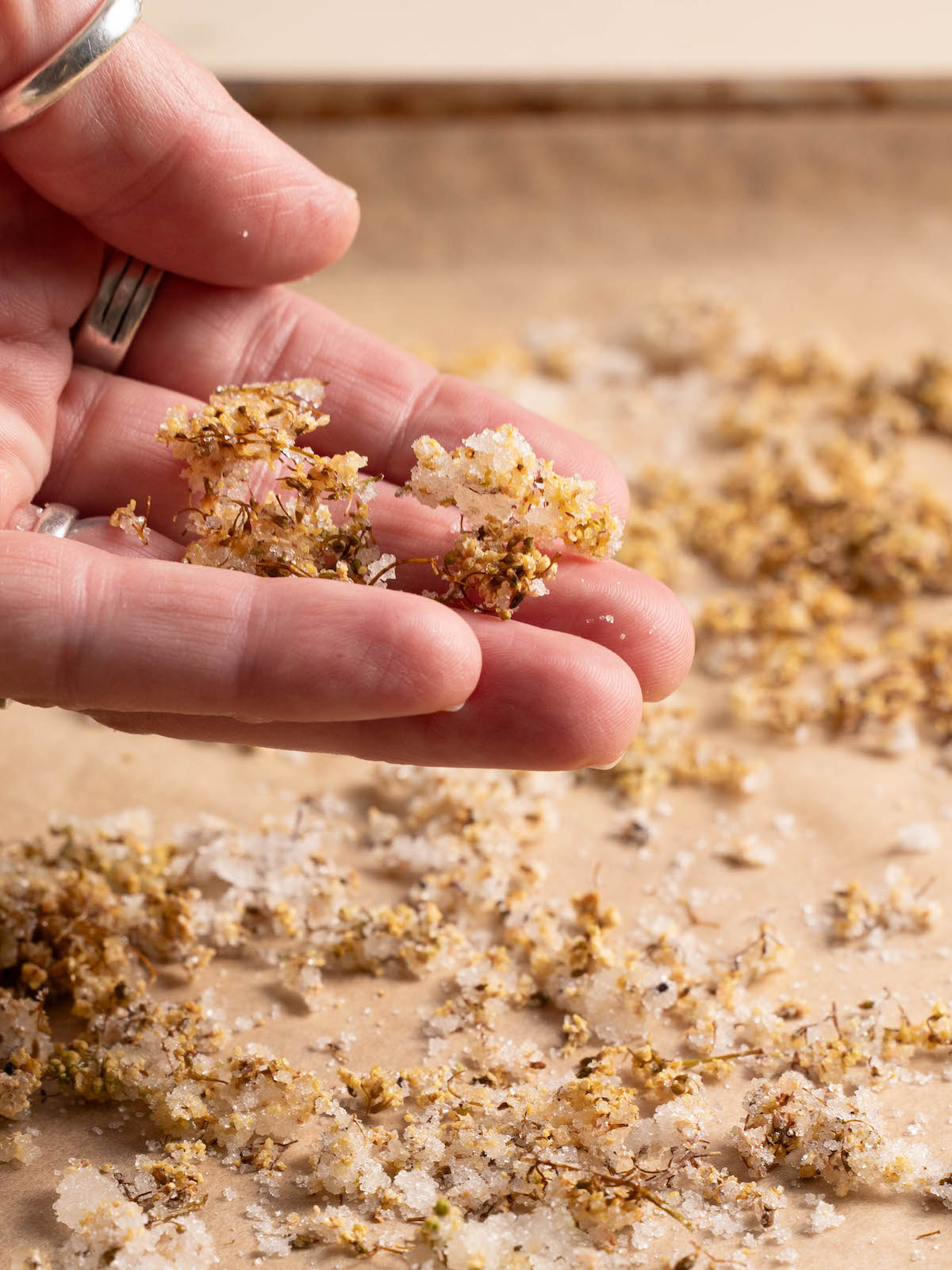
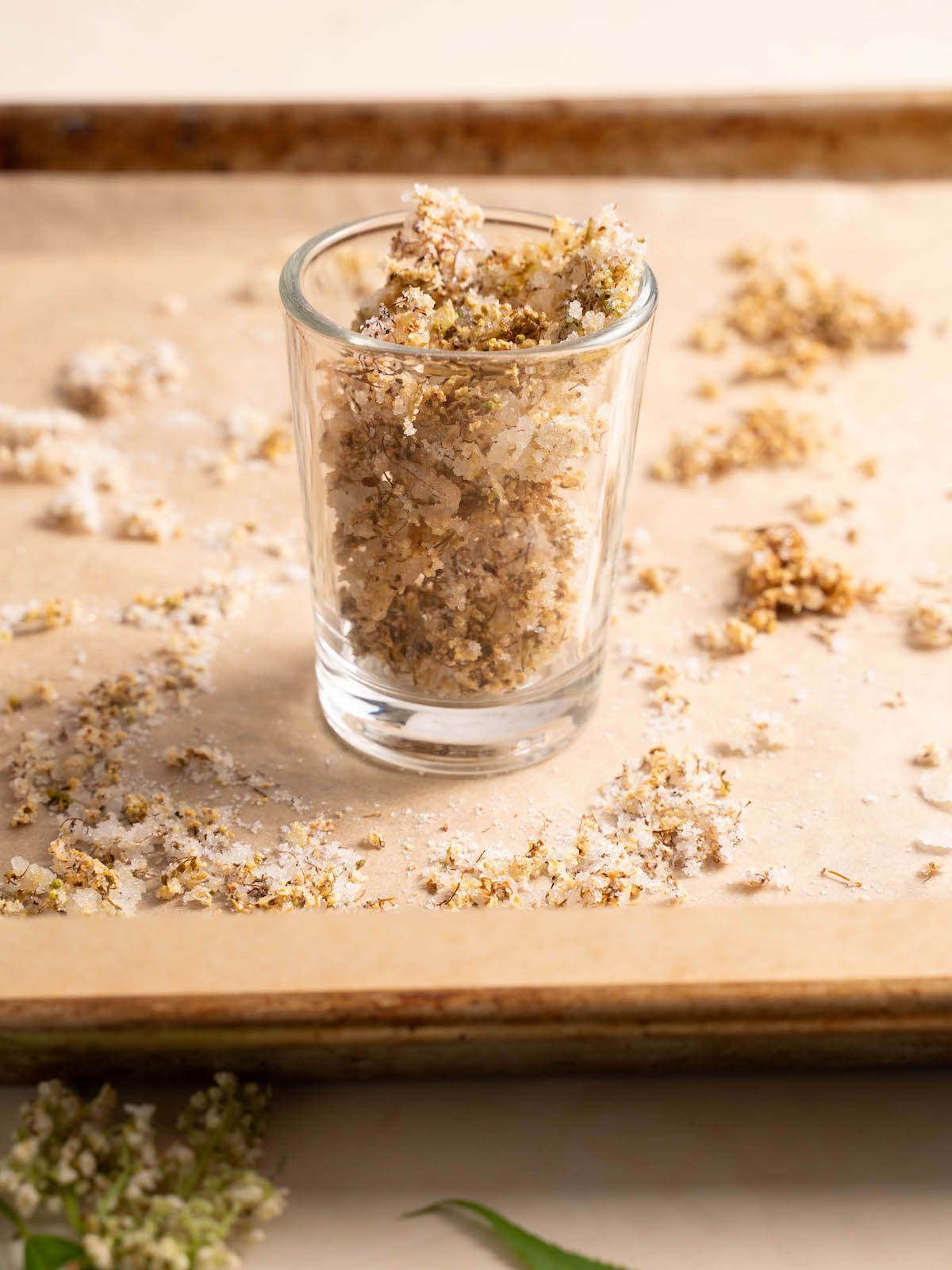
Store the candied elderflowers in an airtight container in a dark, cool cupboard for up to a year.
Recipe ideas
Using elderflower syrup in recipes —
There are SO many things you can make with elderflower syrup. Here are just a few ideas:
- Turn it into Elderflower Buttercream. Follow the same method for my Dandelion Buttercream, but replace the dandelion syrup with elderflower syrup.
- Use it to soak cake layers. Add flavor and moisture to layer cakes by brushing this syrup between layers. Genoise (aka sponge) cakes can especially benefit from this, like this recipe for Raspberry Shortcake.
- Add it to mocktails. For the simplest mocktail, just add a little fresh lemon juice and some sparkling water. Or use your creativity to come up with a fun seasonal drink.
- Add it to cocktails. Elderflower syrup is great in a classic Part Time Lover, White Linen, or other drinks that typically call for St. Germain. You could also simply mix it with champagne. Or, try it with gin, lemon, and fresh raspberries!
- Macerate berries in it. Infuse berries with sweetness and flavor when using for desserts like shortcakes, pies, and tarts.
- Replace a liquid sugar (maple syrup, agave, honey) in recipes. Try swapping that liquid sugar out for elderflower syrup instead.
Using the candied elderflowers —
These are great for decorating cakes, tarts, and cupcakes. They look pretty, add a hint of flavor, and add a nice little crunch. I used candied elderflowers on these chocolate elderflower cupcakes, and they’d be great on this Strawberry Elderflower Cake, too.
More elderflower recipes
Did you make this recipe? Leave a comment and star rating below to let me know what you think!
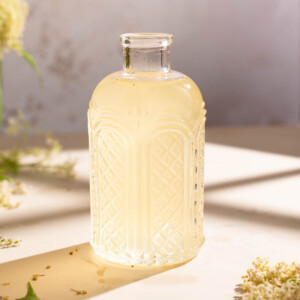
Elderflower Syrup & Candied Elderflowers
Ingredients
Elderflower Syrup
- 2 cups sugar
- 2 cups water
- 1 cup packed fresh elderflowers, (removed from stems)
For Candied Elderflowers
- about ½ cup sugar
Instructions
For the syrup:
- Add sugar and water to a heavy-bottomed saucepan. Bring to a boil, then reduce heat to a simmer. Simmer for about five minutes, or until sugar is completely dissolved.
- Turn off heat and allow syrup to cool slightly, about 10 minutes.
- Add elderflowers and swirl to mix into syrup. Cover with a lid and infuse for 20 minutes.
- Strain syrup into a clean jar and set flowers aside.
For the candied elderflowers:
- Preheat oven to its lowest setting – it should be under 200° F (I set mine to 170° F). Line a baking sheet with parchment paper.
- Place sugar in a small bowl. Dip strained, syrup-coated flowers into sugar; toss to coat and gently shake off any excess sugar.
- Lay flowers onto prepared baking sheet in a single layer.
- Bake until completely dry, about an hour. You should be able to crumble the flowers with your fingers easily.
- Let the candied flowers cool before storing.
Notes
Did you try this recipe?
Be sure to leave a comment below!